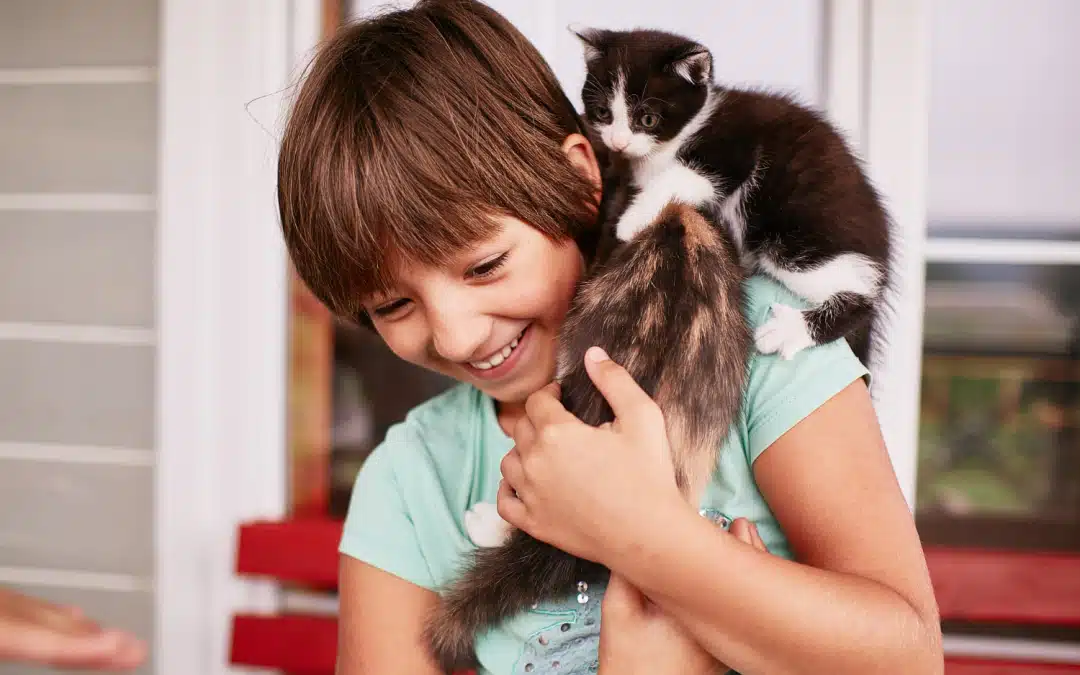
Being a stay-at-home mother is a full-time job with unpaid overtime all the time. You’re also the manager and the one to whom all the tasks get delegated, so you have to learn how to juggle countless responsibilities at once.
Tasks like child-rearing, housework, cooking, managing appointments, and keeping everyone healthy and entertained often fall on your plate, so it’s no wonder that, by the end of the day, you are drained both physically and mentally.
Adding a pet to this whole mess might seem like an extra chore on your list, but in most cases, the extra labor is worth it. Pets, whether furry, fluffy, or feathery, can help you relax and stay present.
Plus, pets are beneficial for fostering kids’ psychological development in ways we sometimes overlook. So, if you’re interested in getting a pet or your kids have been bugging you about it, we put together a list of benefits that may help you decide.
The Role of Pets in Child Development

If you’ve ever seen or experienced the bond between a child and their pet, you know it’s something special. These animal friends provide unconditional love and comfort to kids who feel stressed or anxious.
Having pets around also helps children develop social skills. When they talk to their pets, they’re practicing how to express themselves, which is an important skill for life. Pets also spark creativity in your child through playtime activities. Ever notice how they invent little games with the family dog? It boosts their imagination and problem-solving abilities.
Kids who are old enough to take care of feeding and cleaning after a pet learn responsibility and accountability.
Plus, keeping up with these tasks gives them a sense of accomplishment. And let’s not forget physical activity! Whether it’s running around with a cat or throwing balls for dogs to fetch, having pets encourages exercise without even realizing it.
Most importantly, pets offer unwavering loyalty that builds trust at home. Knowing there’s always a friendly face waiting makes children feel secure, even during those tough days when everything else seems uncertain.
Should You Get an ESA?
An emotional support animal is a bit more special than a regular pet because you need a mental health expert’s recommendation to get one. After a consultation (or several, depending on the situation), a psychologist or psychiatrist can write you an emotional support animal ESA letter, which gives you the right to look for such a pet.
The main task of an ESA is to provide comfort and support to its owner. Their temperament is calm and sweet, and it is believed they can sense mood changes, so they often provide comfort precisely when it’s needed most.
Studies show that these special animals can help alleviate symptoms of anxiety, depression, or stress. For children, especially those who struggle with shyness or social anxieties, an ESA can be a silent friend who listens without judgment. This unconditional bond helps them feel secure while navigating complex emotions.
Should you go through the extra hassle of getting an ESA letter and a special pet?
If you notice that you or your child often feel overwhelmed by stress, anxiety, or emotional challenges, an emotional support animal might be the best option.
Ways to Introduce a Pet into Family Life
Bringing a new pet home is exciting but requires careful planning. Start by researching which type of pet fits your family’s lifestyle and energy levels. Whether it’s a playful dog, a mischievous cat, or a funny parrot, choose wisely.
Prepare your space with essentials like food bowls, beds, and toys before the pet arrives. Also, do some basic pet-proofing, such as securing loose wires and cords that curious pets might chew on and keeping small objects out of reach to prevent choking.
Consider the plants in your home; some are toxic to animals. Do a quick inventory check and replace any harmful greenery with pet-friendly options. Ensure that all household cleaning supplies, medications, and chemicals are stored safely away in cabinets or shelves where pets can’t access them.
Before you bring the new family member home, have a family meeting and get everyone involved in caring for its needs. Don’t leave the kids out of this – age-appropriate tasks will teach kids responsibility.
Wrap Up
Pets, ESAs, or regular ones enrich family life, offering love and joy while fostering children’s emotional growth. In the long term, their companionship becomes a treasured part of everyday moments shared at home.
